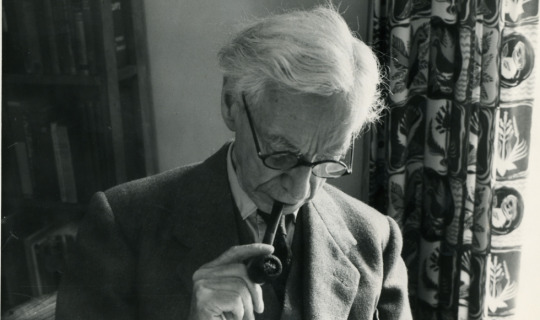#cantor
Text
Welcome to the premier of One-Picture-Proof!

This is either going to be the first installment of a long running series or something I will never do again. (We'll see, don't know yet.)
Like the name suggests each iteration will showcase a theorem with its proof, all in one picture. I will provide preliminaries and definitions, as well as some execises so you can test your understanding. (Answers will be provided below the break.)
The goal is to ease people with some basic knowledge in mathematics into set theory, and its categorical approach specifically. While many of the theorems in this series will apply to topos theory in general, our main interest will be the topos Set. I will assume you are aware of the notations of commutative diagrams and some terminology. You will find each post to be very information dense, don't feel discouraged if you need some time on each diagram. When you have internalized everything mentioned in this post you have completed weeks worth of study from a variety of undergrad and grad courses. Try to work through the proof arrow by arrow, try out specific examples and it will become clear in retrospect.
Please feel free to submit your solutions and ask questions, I will try to clear up missunderstandings and it will help me designing further illustrations. (Of course you can just cheat, but where's the fun in that. Noone's here to judge you!)
Preliminaries and Definitions:
B^A is the exponential object, which contains all morphisms A→B. I comes equipped with the morphism eval. : A×(B^A)→B which can be thought of as evaluating an input-morphism pair (a,f)↦f(a).
The natural isomorphism curry sends a morphism X×A→B to the morphism X→B^A that partially evaluates it. (1×A≃A)
φ is just some morphism A→B^A.
Δ is the diagonal, which maps a↦(a,a).
1 is the terminal object, you can think of it as a single-point set.
We will start out with some introductory theorem, which many of you may already be familiar with. Here it is again, so you don't have to scroll all the way up:

Exercises:
What is the statement of the theorem?
Work through the proof, follow the arrows in the diagram, understand how it is composed.
What is the more popular name for this technique?
What are some applications of it? Work through those corollaries in the diagram.
Can the theorem be modified for epimorphisms? Why or why not?
For the advanced: What is the precise requirement on the category, such that we can perform this proof?
For the advanced: Can you alter the proof to lessen this requirement?
Bonus question: Can you see the Sicko face? Can you unsee it now?
Expand to see the solutions:
Solutions:
This is Lawvere's Fixed-Point Theorem. It states that, if there is a point-surjective morphism φ:A→B^A, then every endomorphism on B has a fixed point.
Good job! Nothing else to say here.
This is most commonly known as diagonalization, though many corollaries carry their own name. Usually it is stated in its contraposition: Given a fixed-point-less endomorphism on B there is no surjective morphism A→B^A.
Most famous is certainly Cantor's Diagonalization, which introduced the technique and founded the field of set theory. For this we work in the category of sets where morphisms are functions. Let A=ℕ and B=2={0,1}. Now the function 2→2, 0↦1, 1↦0 witnesses that there can not be a surjection ℕ→2^ℕ, and thus there is more than one infinite cardinal. Similarly it is also the prototypiacal proof of incompletness arguments, such as Gödels Incompleteness Theorem when applied to a Gödel-numbering, the Halting Problem when we enumerate all programs (more generally Rice's Theorem), Russells Paradox, the Liar Paradox and Tarski's Non-Defineability of Truth when we enumerate definable formulas or Curry's Paradox which shows lambda calculus is incompatible with the implication symbol (minimal logic) as well as many many more. As in the proof for Curry's Paradox it can be used to construct a fixed-point combinator. It also is the basis for forcing but this will be discussed in detail at a later date.
If we were to replace point-surjective with epimorphism the theorem would no longer hold for general categories. (Of course in Set the epimorphisms are exactly the surjective functions.) The standard counterexample is somewhat technical and uses an epimorphism ℕ→S^ℕ in the category of compactly generated Hausdorff spaces. This either made it very obvious to you or not at all. Either way, don't linger on this for too long. (Maybe in future installments we will talk about Polish spaces, then you may want to look at this again.) If you really want to you can read more in the nLab page mentioned below.
This proof requires our category to be cartesian closed. This means that it has all finite products and gives us some "meta knowledge", called closed monoidal structure, to work with exponentials.
Yanofsky's theorem is a slight generalization. It combines our proof steps where we use the closed monoidal structure such that we only use finite products by pre-evaluating everything. But this in turn requires us to introduce a corresponding technicallity to the statement of the theorem which makes working with it much more cumbersome. So it is worth keeping in the back of your mind that it exists, but usually you want to be working with Lawvere's version.
Yes you can. No, you will never be able to look at this diagram the same way again.
We see that Lawvere's Theorem forms the foundation of foundational mathematics and logic, appears everywhere and is (imo) its most important theorem. Hence why I thought it a good pick to kick of this series.
If you want to read more, the nLab page expands on some of the only tangentially mentioned topics, but in my opinion this suprisingly beginner friendly paper by Yanofsky is the best way to read about the topic.
#mathblr#mathematics#set theory#diagram#topos theory#diagonalization#topology#incompleteness#logic#nLab#Lawvere#fixed point#theorem#teaching#paradox#halting problem#math#phdblr#Yanofsky#Cantor#Tarski#Gödel#Russell#philosophy#category theory
71 notes
·
View notes
Note
jeff satur wallpaper? <3
☆ Jeff satur. ( ator - cantor ) lockscreens









#jeff satur wallpaper#jeff satur asia tour#jeff satur locks#Jeff satur lockscreens#jeff satur black tie#jeff satur#tailandia#thailand#ator#cantor#jeff#ask blog#boys lockscreens#boys layouts#boys life#boys republic#boy love#boy liker#lockscreens#lockscreen#messy locs#low quality#messy model#messy boy#messy layouts#messy moodboard#messy icons#messy#moodboard#edit
43 notes
·
View notes
Text






jão layouts !!!
#messy#messy header#messy icon#messy pack#twitter#twitter packs#layouts#jão#jão headers#jão moodboard#jão romania#jão layouts#jão icons#jão packs#cantor#singer#pirata#anti heroi#brasil#packs#blue layouts#blue headers#white headers#white layouts#clean layouts
276 notes
·
View notes
Text
𐚁̸ jungkook lockscreen ( bts )


by: @orbittkey
#kpop icons#bts#bts jungkook#jungkook#jungkook icons#lockscreens#lockscreen jungkook#bts lockscreen#tumblr#cantor#kpop#icons
19 notes
·
View notes
Text
Harry Styles wallpaper


#harry styles#harry#wallpaper#harry wallpaper#cantor#stylesedits#papel de parede#harry styles wallpaper
42 notes
·
View notes
Text
Russell Paradoksu

Bertrand Russell’ın matematiği mantıksal temele oturtmak için yaptığı çalışmalar sırasında fark ettiği ve çalışmalarını sekteye uğratan bir paradoks bulmuştu.
Russell, matematiği mantıksal temele ulaştırmak isteyen çalışmalarının temeline Contor’a ait olarak kümeler kuramını koymuştur. Bu kurama göre matematik objeler kümelerden oluşuyordu; bu şekilde sınıflandırma yapılabilirdi. Yani her bir sayının, doğrunun ve matematiksel objenin bir kümeye dahil olduğuna inanıyordu.(5′ler kümesi, üçgenler kümesi gibi)
Bu girizgahtan sonra gelelim Russell paradoksuna. İşte bu paradoksu açıklamak için Russel’ın verdiği bir örnek:
Tıraş konusunda katı kuralları olan bir köy düşünün. Bu kurallara göre her erkek her gün tıraş olmak zorundadır. Ama kimse kendisini tıraş etmek zorunda değildir. Kendi kendine tıraş olmak istemeyen berbere gider. Çünkü kural bunu gerektirmektedir. (Kural: kendi tıraş olmayan berbere gidecek.) Bu da bir paradoksa sebep olur! Berberi kim tıraş edecek? Kurallara kendini tıraş edemez çünkü berber olarak sadece kendi tıraş olmayanları tıraş eden kişi tarafından tıraş edilmiş olacaktır. Berbere de gidemez, çünkü yine kendisini tıraş etmiş olacaktır ve kendisinden başka da berber yoktur....
Örnekte de göründüğü gibi; kendilerini içermeyen tüm kümelerin kümesi kendini içerir mi sorusunun cevabı eğer içerirse içermez, eğer içermezse de içerirdir....Bu da Russell Paradoksu’dur...
44 notes
·
View notes
Text
Teto icons






— like or reblog if you save, please
#matue#l7nnon#filipe ret#djonga#trapbrasil#cantor#icons#twitter icons#famous icons#brasil icons#teto icons#teto
174 notes
·
View notes
Text
Bright Vachirawit Burberry 13/07/23
Bright Vachirawit Jovem ator tailandês, embaixador da marca saudou os fãs no evento Burberry. Caminhou direto de Hong Kong para o evento Burberry Elements Store. Wok levou-os para ver o Look completo pessoalmente! @nuipapass por #VogueReports #Burberry Instagram @bbrightvc
#VogueReports#BrightVachirawit#bright vachirawit#Burberry#Burberry Elements Store#f4thailandboysoverflowers#F4#ator#cantor#modelo#EmbaixadorVogueReports#asia#Tailândia#tailandês#ator tailandês
14 notes
·
View notes
Text
Friend: Most sets have more than infinity elements!
Me: Actually, most sets have less than infinity elements, it's just that Sets Georg made a few sets with more than infinity elements, and it skews the average
11 notes
·
View notes
Text
M.PAULINO NO SOUNDCLOUD: https://on.soundcloud.com/kagbiEe1F1wZRimr5
TUMBIR: https://www.tumblr.com/blog/mpaulino-world
VAMOS ASSINAR O CANAL DELE NO YOUTUBE.
DEEM ESSA FORÇA. https://youtube.com/channel/UCgcNDkDroC3Se1DxwsJVOYw
2 notes
·
View notes
Text
CANTOR was an English and German singing synthesizer released around the same time as MIRIAM, rivaling VOCALOID1 with its 50 voices (though the voices do not have specific names) and compatibility with Mac computers.
The box art style was similar to that of LEON and LOLA, using the same standard of a stock photo representing the human mouth.

(source: Vocaloid Wiki)
32 notes
·
View notes



